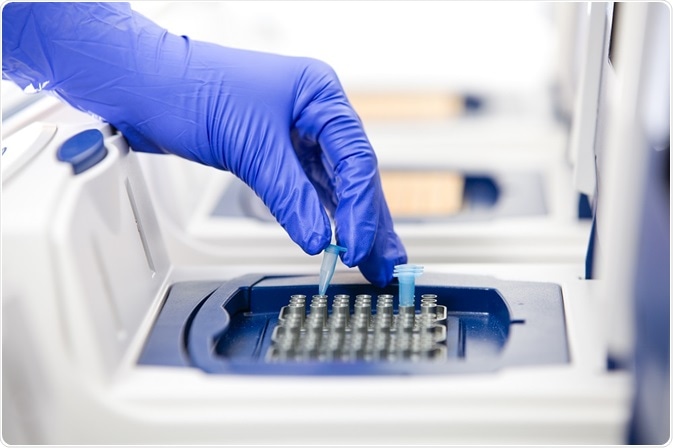The Polymerase Chain Reaction (PCR) is a commonly used method for amplifying DNA, which can then be used for gene cloning, sequencing, and for gene manipulation. The technique has also been applied to disease diagnosis.

Credit: Vit Kovalcik/Shutterstock.com
It is important to study DNA to establish gene function and the effect of mutations on disease. DNA analysis also allows for the development of cures. In PCR, DNA is extracted from a cell and amplified, generating thousands of copies for analysis.
Amplification is achieved through the use of nucleotides and RNA templates known as primers. An enzyme called Taq polymerase extends the primers using the free nucleotides, producing identical copies of the region of interest.
What is Real-Time Quantitative PCR (qPCR)?
Real-Time Quantitative PCR (also known as qPCR) is a way of finding out how much of a specific section of DNA there is in a sample, in real time. This allows sections of DNA (or, nucleic acids) to be screened simultaneously.
It uses either non-specific fluorescent dyes, or sequence-specific DNA probes containing fluorescent-reporter oligonucleotides (larger DNA fragments) to detect the PCR products as they are produced. Being able to directly see the presence of a specific nucleotide can show whether or not a specific organism is present and can highlight specific gene abnormalities, such as the CTFR gene known to cause Cystic Fibrosis.
Quantifying the number of specific nucleic acids present can be done in two ways: by relative quantification or absolute quantification. Absolute quantification gives compares the sample to a DNA standard to measure the exact number of target DNA molecules present. However, relative quantification uses internal reference genes (genes within the sample DNA itself) to determine the quantity of the target gene present.
Is qPCR the best method of quantifying DNA?
Real-time Quantitative PCR is very sensitive to changes in DNA expression. This is advantageous compared to other current methods, such as microarrays, as the final result can be seen before the end point, giving more time for further analysis. In contrast, qPCR requires a lot of input RNA at the start of the reaction, and is more sensitive to fast, high-throughput reactions, which increases the chances of failure.
Where is qPCR commonly used?
In research and hospital labs, qPCR is used mainly for DNA research and in the diagnosis of viral, bacterial, and genetic diseases such as cancer and congenital diseases.
Real-time Quantitative PCR is also used in industry. For example, it can be used to analyse the bioburden of products or raw materials such as food and medications. The method can also be used to find out whether or not a food item contains GMO’s (Genetically Modified Organism’s), by seeking out the presence of a transgene within the plant product’s DNA.
Real time PCR
Further Reading